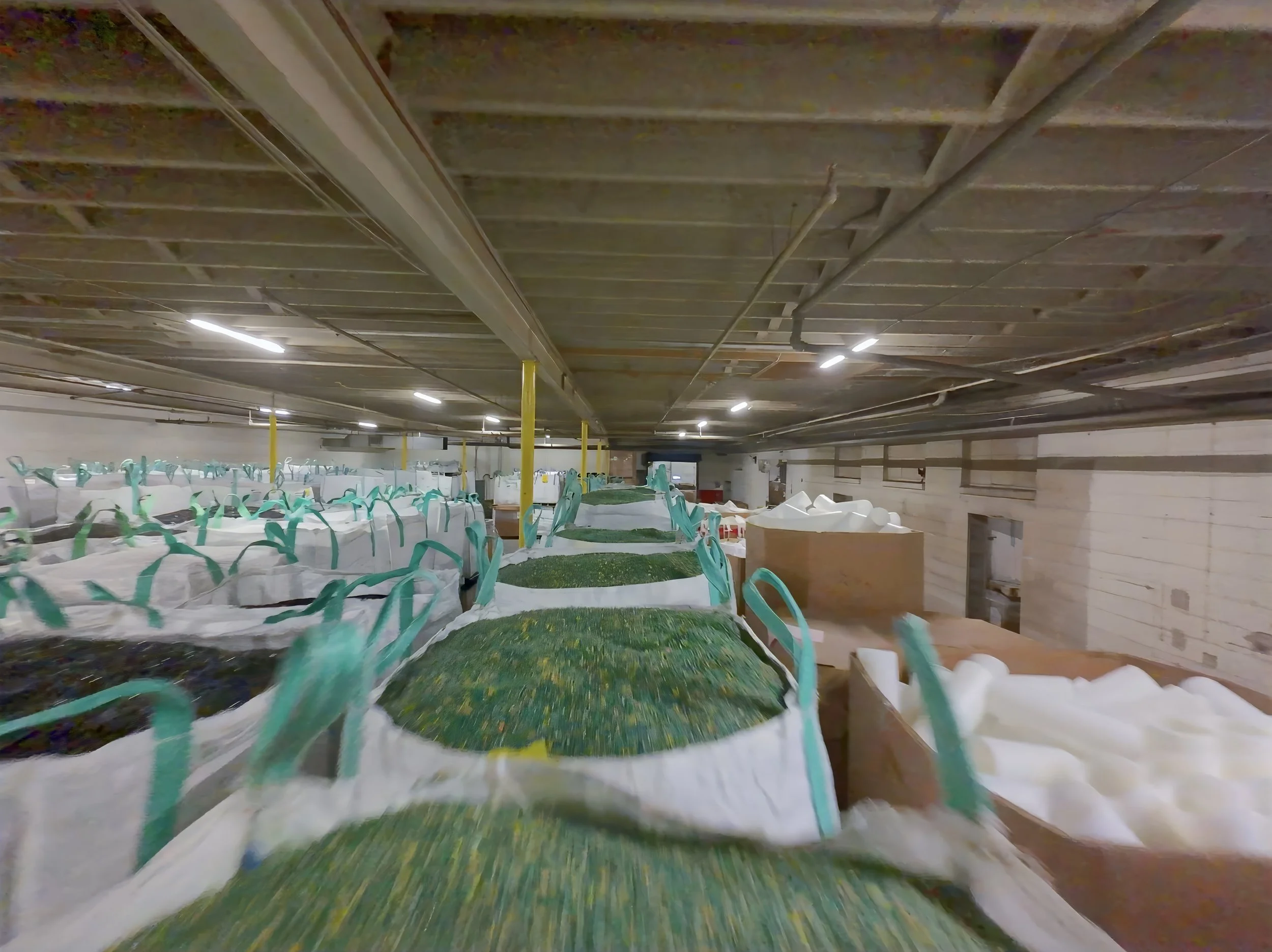Download our Insights Report below
Interim Legislative and Regulatory
Insights Report
Packaging & United States Extended Producer Responsibility
Understand the Emerging EPR Landscape
An Introduction to the Emerging EPR Landscape in the United States
Extended Producer Responsibility (EPR) represents a fundamental shift in the incumbent U.S. waste management paradigm, assigning brands, producers, and corporations direct responsibility for the lifecycle management of their packaging materials. As more states across the U.S. adopt and refine EPR legislation, stakeholders throughout the value chain face increased regulatory complexity, heightened financial commitments, and expanded operational responsibilities. The Interim Legislative and Regulatory Insights report systematically examines this evolving landscape, providing granular detail essential for stakeholders as they develop and refine compliance strategies, anticipate challenges, and identify opportunities for innovation and partnership.
Existing Regulatory Landscape
Across the U.S., EPR frameworks are taking shape with varying timelines, impacted entities, exempted materials, compliance obligations, and enforcement mechanisms. Colorado, Maine, Minnesota and Oregon have active or near-active programs mandating producer registration with Producer Responsibility Organizations (PROs), along with extensive requirements related to data collection, material recyclability, and market accountability.
Pending Legislation
Beyond states with active EPR programs, multiple others, including Connecticut, Hawaii, Illinois, Massachusetts, Nebraska, New Jersey, New York, Rhode Island and Vermont have pending legislation in 2025 that ranges from data collection and need assessment bills to full comprehensive EPR program legislation. In April 2025, the Maryland and Washington legislatures passed comprehensive packaging extended producer responsibility legislation, and both measures have been sent to their respective governors for signature.
Strategic Considerations for Compliance
Companies must now closely scrutinize their packaging design, material procurement strategies, and supply chain logistics. Upstream, procurement officers and sustainability leads face challenges in sourcing recyclable and compostable materials that satisfy both performance standards and regulatory criteria. Downstream, the challenges are equally pronounced. Producers are increasingly responsible not merely for their product packaging but for ensuring adequate infrastructure for material recovery, sorting, processing, and reintegration. This shift necessitates expanded partnerships with recyclers, municipalities, technology providers, and material innovators. Producers must proactively identify gaps in processing infrastructure, particularly for complex packaging materials like thin-film plastics, foam, and multi-layer composites, and develop solutions that ensure compliance and mitigate potential cost penalties or disruptions.
Operational Implications and Data Management Needs
The operational implications of these regulatory shifts are extensive. Companies must implement robust data collection and management systems capable of accurately tracking packaging types, volumes, recyclability metrics, and end-market outcomes across multiple jurisdictions. This represents a substantial logistical and technological challenge, particularly for brands operating across diverse regulatory environments. Efficient compliance will require sophisticated software solutions, precise data management protocols, and increased transparency across procurement, production, and end-of-life management practices. The accuracy and reliability of this data will directly impact producers' financial obligations, compliance reporting accuracy, and ultimately, their regulatory standing and reputational risk.
Challenges and Market Gaps
A critical aspect of producer readiness for EPR involves recognizing and addressing current market gaps. Infrastructure shortages for certain recyclable materials, limited end-market demand, and regional processing capacity constraints all pose significant challenges. Producers must engage with recycling markets to anticipate and resolve potential bottlenecks proactively. For example, thin-film plastics represent a material category fraught with challenges due to limited recycling infrastructure and end-market viability. Producers must not only navigate these regulatory challenges but also take leadership roles in fostering market development, infrastructure investment, and collaborative initiatives that expand recycling capabilities and create sustainable material pathways.
Collaboration and Industry Initiatives
Given the extensive nature of EPR obligations, cross-industry collaboration becomes paramount. PROs offer a centralized mechanism through which companies can collectively manage compliance requirements, engage in dialogue with regulatory bodies, and implement strategic initiatives for material recovery and recycling infrastructure improvements. Further, industry consortia, public-private partnerships, and multi-stakeholder platforms will be instrumental in addressing collective challenges, driving innovation, and ensuring producers effectively navigate compliance landscapes. Collaborative frameworks will facilitate investment pooling, infrastructure development, and knowledge sharing essential for managing the scale and complexity inherent to multi-state EPR compliance.
Opportunities for Innovation and Leadership
Despite the complexities and challenges, the emergence of EPR frameworks presents substantial opportunities for innovation and market leadership. Companies proactively engaging with these regulatory shifts can differentiate themselves through sustainable packaging innovation, improved recycling technologies, and enhanced brand reputation among environmentally conscious consumers and investors. Leadership in circular economy practices, transparent reporting, and proactive infrastructure investments will provide competitive advantages, positioning forward-looking producers as industry leaders.
Fragmentation Creates Complexity—And Strategic Differentiation
While EPR has long been a global best practice in parts of Europe, Canada, and Asia, the U.S. is only now adopting the model at scale. However, rather than a unified federal initiative, EPR in the U.S. is emerging through a decentralized, state-by-state evolution. This disjointed approach is creating a compliance matrix that producers must navigate with care. Differing definitions of covered materials, exemptions, producer thresholds, enforcement mechanisms, and cost-sharing models mean that what suffices in one state may be wholly insufficient in another. The burden of compliance is no longer theoretical—it is measurable, immediate, and growing in complexity.
Opportunity Through Circular Innovation and Design
Within this complexity lies immense strategic opportunity. EPR is not simply a regulatory hurdle; it is a policy architecture that encourages long-term planning, innovation, and inter-industry collaboration. Leading producers who view EPR as a lever rather than a liability will position themselves at the forefront of sustainable packaging leadership.Compliance Begins at the Design Stage
Moreover, the emergence of EPR compels a more integrated relationship between upstream and downstream stakeholders. Packaging design teams must now work closely with supply chain and compliance officers, municipal recovery systems, and even end-market manufacturers to understand lifecycle material management and viability. Brands that once viewed packaging solely through the lens of marketing and cost must now consider the recyclability of adhesives, the chemical composition of inks, and the logistics of material recovery systems. This shift brings packaging into the core of corporate environmental strategy and introduces a new frontier of design-for-compliance.
Economic Growth Through Circular Infrastructure
At the same time, this transition presents a powerful economic development story. States embracing EPR are seeing increased investments in recycling infrastructure, job creation, and innovation in alternative packaging design. PROs such as Circular Action Alliance are already collaborating with state agencies and local governments to direct funding, improve standards, and verify end markets. These efforts drive measurable environmental outcomes while catalyzing circular economy ecosystems within states and regions.
From Compliance to Leadership
Finally, the future of EPR is not only about compliance—it is about leadership. Brands and producers that take proactive steps to embed circularity into their operations will be well-positioned for competitive advantage. By viewing packaging not as an externality but as a managed asset, they can unlock new efficiencies and generate long-term value.
Photo: Direct Polymers, Denver Colorado



